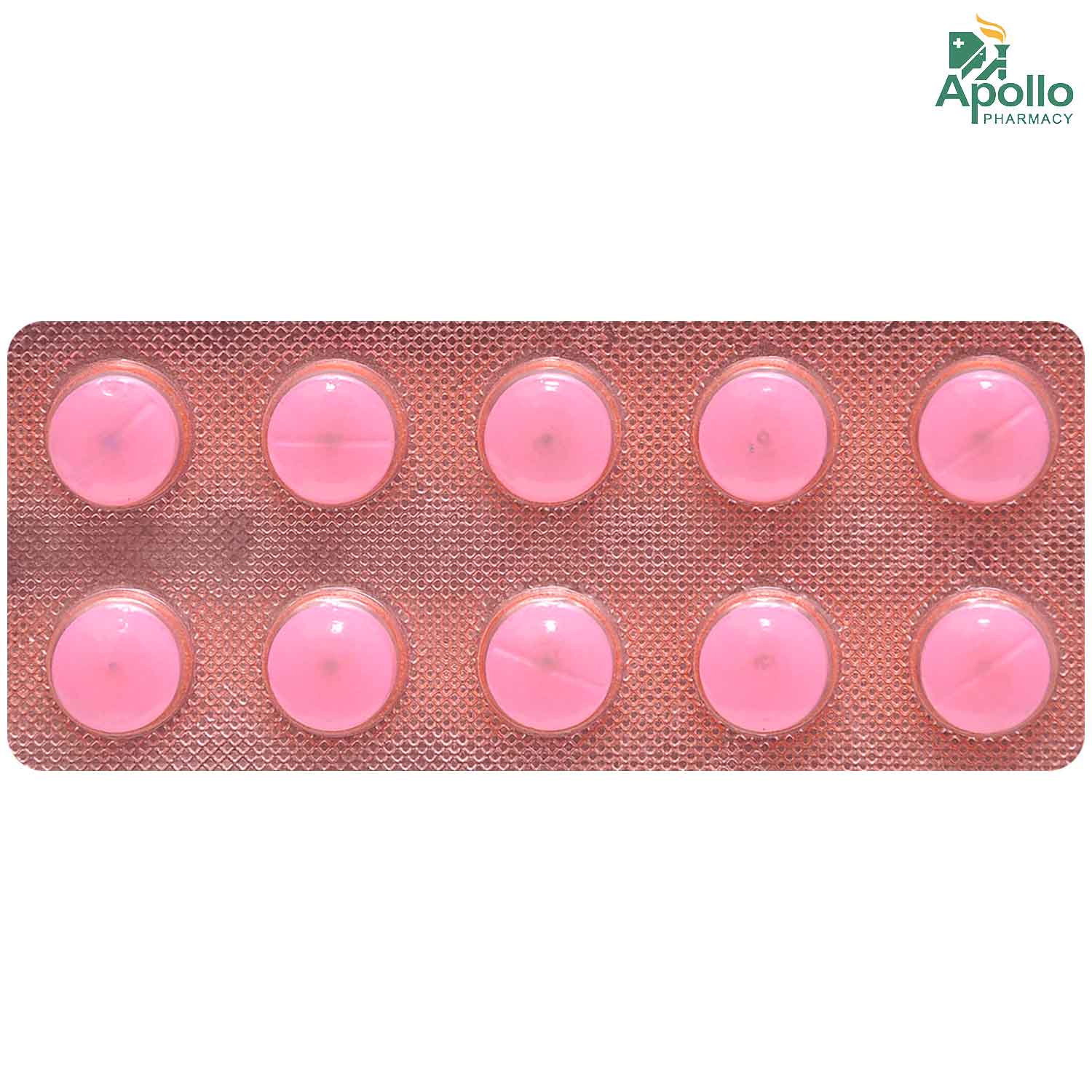QINARSOL 300MG TABLET


MRP ₹53.44
(Inclusive of all Taxes)
₹8.0 Cashback (15%)
Provide Delivery Location
Online payment accepted
 Prescription drug
Prescription drugWhats That
Synonym :
Composition :
Manufacturer/Marketer :
Consume Type :
Return Policy :
Expires on or after :
NPPA :
About QINARSOL 300MG TABLET
QINARSOL 300MG TABLET belongs to the class of 'anti-malarial drugs', primarily used to treat and prevent malaria. Malaria is a disease caused by a plasmodium parasite transmitted by the bite of infected Anopheles mosquitoes. When an infected mosquito bites a healthy person, it transmits the 'Plasmodium parasite' into the bloodstream, which affects the red blood cells and liver cells. Malaria symptoms usually start ten days to four weeks after the infection. They include chills, high fever, profuse sweating, headache, nausea, vomiting, abdominal pain, diarrhoea, anaemia, muscle pain, convulsions, coma and bloody stools.
QINARSOL 300MG TABLET contains Quinine which treats malaria. It treats malaria by increasing the levels of hemozoin (a toxic substance to the malarial parasite) in the blood. As a result, it kills the parasite and helps to stop the infection from spreading further.
QINARSOL 300MG TABLET should be taken as prescribed by the doctor. Your doctor will decide the dose and duration based on your medical condition. Common side effects of QINARSOL 300MG TABLET include headache, dizziness, loss of appetite, weakness, fever, chills, tiredness, muscle/joint pain, nausea, vomiting, abdominal pain, cough and trouble sleeping. These side effects are not familiar to everyone and vary individually. If you notice any side effects that are not manageable, please consult your doctor.
Before using QINARSOL 300MG TABLET, inform your doctor if you recently used any prescription and non-prescription medications, including other anti-malarial or antibiotic drugs. Let your doctor know if you are allergic to QINARSOL 300MG TABLET or its components. Inform your doctor if you have any liver or kidney problems or severe heart diseases. Let your doctor know if you are pregnant, planning to conceive, or a breastfeeding mother. Avoiding alcohol is recommended to rule out any possibility of side effects.
Uses of QINARSOL 300MG TABLET
Directions for Use
Medicinal Benefits
QINARSOL 300MG TABLET belongs to the class of 'anti-malarial drugs,' containing Quinine, primarily used to treat and prevent malaria. It is also used to treat and prevent nighttime cramps in the legs. It treats malaria by increasing the levels of hemozoin (a toxic substance to the malarial parasite) in the blood. As a result, it kills the parasite and helps to stop the infection from spreading further.
Storage
Drug Warnings
Let your doctor know if you use any antibiotic drugs or have recently undergone treatment with other anti-malarial drugs. Inform your doctor if you have any allergic reactions to QINARSOL 300MG TABLET or its components. Brief your medical history to the doctor if you have any liver or kidney problems, malarial infection of the brain, lungs or kidneys, severe heart diseases, electrolyte imbalance, hypokalemia (low potassium levels) or hypomagnesemia (low magnesium levels) before taking QINARSOL 300MG TABLET. This medicine may affect QT prolongation which can cause serious fast/irregular heartbeat. Hence it is advised to inform your doctor if you have any heart-related problems like heart failure, slow heartbeat, QT prolongation in EKG or ECG (electrocardiogram) and a family history of heart diseases. It is not recommended during the first three months of pregnancy. Do not use this medicine during breastfeeding. Once you have completed the course, you should wait at least one week before starting to breastfeed again. However, it is essential to let your doctor know if you are pregnant, planning to conceive or a breastfeeding mother. Avoiding alcohol is recommended to rule out any possibility of side effects like dizziness or drowsiness.
Drug-Drug Interactions
Drug-Drug Interactions
Login/Sign Up
Co-administration of Qinarsol 300mg Tablet with Ziprasidone can increase the risk of irregular heart rhythm.
How to manage the interaction:
Taking Qinarsol 300mg Tablet with Ziprasidone together can possibly result in an interaction, but it can be taken if a doctor has advised it. However, consult a doctor immediately if you experience any symptoms such as sudden dizziness, lightheadedness, fainting, shortness of breath, or heart palpitations. Do not discontinue any medications without consulting a doctor.
Taking Lidocaine with Qinarsol 300mg Tablet may cause methemoglobinemia (blood disorder in which too little oxygen is delivered to your cells).
How to manage the interaction:
Although taking Lidocaine and Qinarsol 300mg Tablet together can evidently cause an interaction, it can be taken if your doctor has suggested it. However, consult the doctor immediately if you develop gray discoloration of the skin, abnormal blood coloration, nausea, headache, dizziness, lightheadedness, fatigue, shortness of breath, rapid or shallow breathing, a rapid heartbeat, palpitation, anxiety, or confusion. Do not stop using any medications without consulting doctor.
When taken in combination Qinarsol 300mg Tablet may significantly raise the loperamide levels in the blood. This can increase the chance of a serious abnormal heart rhythm.
How to manage the interaction:
Although taking loperamide with Qinarsol 300mg Tablet together can result in an interaction, they can be taken if a doctor has prescribed it. However, if you experience sudden dizziness, lightheadedness, fainting, breathing difficulty, or rapid heartbeat, consult the doctor immediately. Do not stop using any medications without talking to a doctor.
Taking Bupivacaine and Qinarsol 300mg Tablet may cause methemoglobinemia, (a condition in which the iron in the hemoglobin molecule -the red blood pigment is defective, making it unable to carry oxygen effectively to the tissues).
How to manage the interaction:
Although taking bupivacaine and Qinarsol 300mg Tablet together can result in an interaction, it can be taken if a doctor has advised it. However, if you experience symptoms such as gray discoloration of the skin, abnormal blood coloration, nausea, headache, dizziness, lightheadedness, fatigue, shortness of breath, rapid or shallow breathing, a rapid heartbeat, palpitation, anxiety, or confusion, consult the doctor immediately. Do not discontinue any medications without consulting a doctor.
Taking Efavirenz and Qinarsol 300mg Tablet can increase the risk or severity of irregular heart rhythms. The risk increases in patients with a history of heart illness or electrolyte imbalance.
How to manage the interaction:
Taking Efavirenz and Qinarsol 300mg Tablet together can result in an interaction, it can be taken if your doctor has advised it. However, if you experience sudden dizziness, lightheadedness, fainting, shortness of breath, chest pain or tightness, rapid heartbeat, or memory loss, contact a doctor immediately. Do not discontinue any medications without consulting a doctor.
Coadministration of Qinarsol 300mg Tablet and erythromycin may significantly increase the blood levels and effects of Qinarsol 300mg Tablet
How to manage the interaction:
Although taking erythromycin and Qinarsol 300mg Tablet together can possibly result in an interaction, they can be taken together if prescribed by a doctor. However, if you experience headache, flushing, sweating, nausea, vomiting, diarrhoea, stomach pain, dizziness, ringing in the ears, hearing loss, blurred vision, vision loss, and abnormal heart rhythm, contact your doctor immediately. Do not stop using any medications without consulting a doctor.
Co-administration of Vigabatrin with Qinarsol 300mg Tablet may increase the risk of serious side effects associated with vision loss, especially if used together for prolonged periods.
How to manage the interaction:
There may be a possibility of interaction between Vigabatrin and Qinarsol 300mg Tablet, but it can be taken if prescribed by a doctor. Routine vision testing is advised during treatment with vigabatrin. Do not discontinue any medications without a doctor's advice.
Using moxifloxacin together with Qinarsol 300mg Tablet can increase the risk of an irregular heart rhythm.
How to manage the interaction:
Taking Moxifloxacin with Qinarsol 300mg Tablet together can possibly result in an interaction, but it can be taken if your doctor has advised it. If you experience any symptoms like an irregular heartbeat, heart problems, or feeling dizzy or short of breath, call your doctor right away. Do not discontinue any medications without first consulting your doctor.
Taking Alfuzosin and Qinarsol 300mg Tablet can increase the risk or severity of irregular heart rhythms.
How to manage the interaction:
Taking Alfuzosin and Qinarsol 300mg Tablet together can result in an interaction, it can be taken if your doctor has advised it. However, if you experience sudden dizziness, lightheadedness, fainting, shortness of breath, chest pain or tightness, rapid heartbeat, or memory loss, contact a doctor immediately. Do not discontinue any medications without consulting a doctor.
Taking Gatifloxacin with Qinarsol 300mg Tablet can increase the risk or severity of irregular heart rhythms. The risk increases in patients with a history of heart illness or electrolyte imbalance.
How to manage the interaction:
Taking Gatifloxacin with Qinarsol 300mg Tablet together can result in an interaction, it can be taken if your doctor has advised it. However, if you experience sudden dizziness, lightheadedness, fainting, shortness of breath, chest pain or tightness, rapid heartbeat, or memory loss, contact a doctor immediately. Do not discontinue any medications without consulting a doctor.
Drug-Food Interactions
Drug-Food Interactions
Login/Sign Up
Diet & Lifestyle Advise
- Take nutritious food, including fresh fruits and vegetables, to help recover from malarial fever.
- During malarial fever, the patient may experience appetite loss. In such cases, drink glucose water, fresh fruit juices and coconut water.
- Include high-fibre foods like green leafy vegetables and fruits to aid digestion.
- Take proper rest to help your body relax and heal faster.
- Avoid or limit the intake of alcohol and caffeine.
Side Effects of QINARSOL 300MG TABLET
- Vomiting
- Abdominal pain
- Fever
- Flushing of the skin
- Headache
- Dizziness
- Deafness
- Tiredness
- Loss of appetite
- Problems with vision or hearing.
- Increased sweating
- Nausea
- Diarrhoea
Habit Forming
Therapeutic Class
All Substitutes & Brand Comparisons
RX
Out of StockQunimax 300mg Tablet
Troikaa Pharmaceuticals Ltd
₹33.75
(₹3.04 per unit)
36% CHEAPERRX
Out of StockD Quine 300mg Tablet
₹42.9
(₹3.86 per unit)
19% CHEAPERRX
Out of StockFoquin 300mg Tablet
₹49
(₹4.41 per unit)
8% CHEAPER
Product Substitutes
Drug-Diseases Interactions
Drug-Diseases Interactions
Login/Sign Up
FAQs
QINARSOL 300MG TABLET belongs to the class of 'anti-malarial drugs', containing Quinine, that treats malaria by increasing the levels of hemozoin (a toxic substance to the malarial parasite) in the blood. As a result, it kills the parasite and helps to stop the infection from spreading further.
If you have or have previously had Long QT syndrome, glucose-6-phosphate dehydrogenase deficiency (G-6-PD), myasthenia gravis (a muscular problem), optic neuritis (inflammation of the nerves in your eyes), or if taking QINARSOL 300MG TABLET in the past caused bleeding, you should not take it.
QINARSOL 300MG TABLET can cause a lowering of blood sugar levels. So, if you are diabetic, please inform your doctor before starting QINARSOL 300MG TABLET, and dose adjustment might be required depending upon your medical condition.
No, finish the prescribed course even if you start to feel better. Stopping it early may make the infection come back and harder to treat.
QINARSOL 300MG TABLET may affect the heart rhythm and cause QT prolongation (heart muscle takes longer than usual to recharge between beats). This QT prolongation can cause a serious fast/irregular heartbeat. Hence it is advised to inform your doctor if you have any heart-related problems like heart failure, slow heartbeat, QT prolongation in EKG or ECG (electrocardiogram) and a family history of heart diseases.
It is advised to have regular eye checkups while using QINARSOL 300MG TABLET. Consult your doctor if you face any change in vision.
Drug-Drug Interactions Checker List
- AMINOPHYLLINE
- THEOPHYLLINE
- AZITHROMYCIN
- CLARITHROMYCIN
- LEVOFLOXACIN
- TETRACYCLINE
- CITALOPRAM
- AMITRIPTYLINE
- CLOMIPRAMINE
- DESIPRAMINE
- ITRACONAZOLE
- KETOCONAZOLE
- VORICONAZOLE
- ATORVASTATIN
- SIMVASTATIN
- LOVASTATIN
- DEXTROMETHORPHAN
- ATAZANAVIR
- INDINAVIR
- RITONAVIR
- SAQUINAVIR
- CARBAMAZEPINE
- OXCARBAZEPINE
- PHENYTOIN
- PRIMIDONE
- CIMETIDINE
- RANITIDINE
- RIFAMPICIN
- RIFABUTIN
- HALOPERIDOL
- THIORIDAZINE
- AMANTADINE
Special Advise
- Inform your doctor that you are taking QINARSOL 300MG TABLET if you are undergoing medical tests.
- Regular monitoring of heart function with ECG or EKG is necessary.
- Liver and kidney function tests are recommended to rule out any chances of kidney or liver impairment.
- QINARSOL 300MG TABLET may decrease the effectiveness of hormonal birth control such as pills, patches or rings. This could cause pregnancy.
- Regularly undergo eye tests while taking QINARSOL 300MG TABLET.
Disease/Condition Glossary
Malaria: Malaria is a life-threatening disease caused by parasites entering the body through mosquito bites. This is a common disease in countries like Africa, South America and Southern Asia. This disease usually occurs when an Anopheles mosquito (infected with the parasite 'Plasmodium') bites a healthy individual and transfers the parasite into the bloodstream. Parasites that cause malaria include Plasmodium vivax, P. ovale, P. malaria and P. falciparum. Malaria symptoms usually start ten days to four weeks after the infection. They include chills, high fever, profuse sweating, headache, nausea, vomiting, abdominal pain, diarrhoea, anaemia, muscle pain, convulsions, coma and bloody stools.

Have a query?
Buy best Infections & Infestation products by
Cipla Ltd
Macleods Pharmaceuticals Ltd
Alkem Laboratories Ltd
Lupin Ltd
Abbott India Ltd
Sun Pharmaceutical Industries Ltd
Mankind Pharma Pvt Ltd
Micro Labs Ltd
Aristo Pharmaceuticals Pvt Ltd
FDC Ltd
Intas Pharmaceuticals Ltd
Glenmark Pharmaceuticals Ltd
Ipca Laboratories Ltd
Torrent Pharmaceuticals Ltd
Zydus Healthcare Ltd
Biochem Pharmaceutical Industries Ltd
Zuventus Healthcare Ltd
United Biotech Pvt Ltd
Hetero Drugs Ltd
Emcure Pharmaceuticals Ltd
Alembic Pharmaceuticals Ltd
Indoco Remedies Ltd
Fusion Health Care Pvt Ltd
Dr Reddy's Laboratories Ltd
Leeford Healthcare Ltd
Cadila Healthcare Ltd
Wockhardt Ltd
Zydus Cadila
GlaxoSmithKline Pharmaceuticals Ltd
Morepen Laboratories Ltd
Blue Cross Laboratories Pvt Ltd
Cadila Pharmaceuticals Ltd
Converge Biotech Pvt Ltd
Elder Pharmaceuticals Ltd
Hetero Healthcare Pvt Ltd
Pfizer Ltd
AAA Pharma Trade Pvt Ltd
Gufic Bioscience Ltd
Mylan Pharmaceuticals Pvt Ltd
Corona Remedies Pvt Ltd
Wallace Pharmaceuticals Pvt Ltd
Apex Laboratories Pvt Ltd
Medishri Healthcare Pvt Ltd
Akumentis Healthcare Ltd
Alniche Life Sciences Pvt Ltd
Hegde & Hegde Pharmaceutica Llp
Veritaz Healthcare Ltd
Ranbaxy Laboratories Ltd
Koye Pharmaceuticals Pvt Ltd
Shreya Life Sciences Pvt Ltd
Overseas Health Care Pvt Ltd
Biocon Ltd
Indchemie Health Specialities Pvt Ltd
Medley Pharmaceuticals Ltd
Brinton Pharmaceuticals Ltd
J B Chemicals & Pharmaceuticals Ltd
Unifaith Biotech Pvt Ltd
Ajanta Pharma Ltd
Biochemix Health Care Pvt Ltd
Natco Pharma Ltd
Samarth Life Sciences Pvt Ltd
Unichem International
Laborate Pharmaceuticals India Ltd
Unipark Biotech Pvt Ltd
Zymes Bioscience Pvt Ltd
Indiabulls Pharmaceuticals Pvt Ltd
Neon Laboratories Ltd
Vasu Organics Pvt Ltd
DR Johns Lab Pharma Pvt Ltd
East West Pharma India Pvt Ltd
La Renon Healthcare Pvt Ltd
Medgen Drugs And Laboratories Pvt Ltd
Novartis India Ltd
Canixa Life Sciences Pvt Ltd
Icarus Health Care Pvt Ltd
Lincoln Pharmaceuticals Ltd
Celon Laboratories Pvt Ltd
Concept Pharmaceuticals Ltd
Klm Laboratories Pvt Ltd
Nicholas Piramal India Ltd
Systopic Laboratories Pvt Ltd
Yuventis Pharmaceuticals
Capital Pharma
German Remedies Ltd
Pristine Pearl Pharma Pvt Ltd
Unison Pharmaceuticals Pvt Ltd
Aurz Pharmaceutical Pvt Ltd
Clover Health Care Pharma
Kepler Healthcare Pvt Ltd
Allites Life Sciences Pvt Ltd
Auspharma Pvt Ltd
Intra Life Pvt Ltd
Jolly Healthcare
Linux Laboratories Pvt Ltd
Ozone Pharmaceuticals Ltd
Cachet Pharmaceuticals Pvt Ltd
Comed Chemicals Ltd
Delcure Life Sciences Ltd
Fresenius Kabi India Pvt Ltd
Khandelwal Laboratories Pvt Ltd
Alcohol
Caution
Avoid alcohol consumption while using QINARSOL 300MG TABLET since it may cause serious side effects.
Pregnancy
Caution
QINARSOL 300MG TABLET is not recommended during the first three months of pregnancy. Your doctor may recommend other alternative medication. Please consult your doctor if you are pregnant or planning pregnancy before taking QINARSOL 300MG TABLET.
Breast Feeding
Caution
QINARSOL 300MG TABLET is not recommended during breastfeeding. Once you have completed the course, you should wait at least one week to start breastfeeding again. Please consult your doctor for more information.
Driving
Unsafe
QINARSOL 300MG TABLET may make you sleepy or dizzy or cause blurry vision. In such cases, do not drive or operate machinery.
Liver
Caution
Let your doctor know if you have any history of liver diseases before using QINARSOL 300MG TABLET. Your liver functioning should be monitored closely while being treated with QINARSOL 300MG TABLET.
Kidney
Caution
Let your doctor know if you have any history of kidney diseases before using QINARSOL 300MG TABLET. Your doctor may suggest tests to monitor your kidney function if required.
Children
Caution
QINARSOL 300MG TABLET should be used in children only when prescribed by a child specialist.






